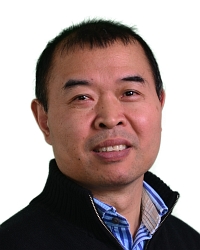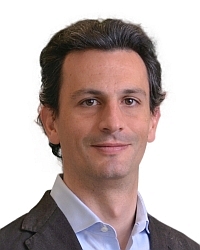TR2020-081
Edge Computing for Interconnected Intersections in Internet of Vehicles
-
- , "Edge Computing for Interconnected Intersections in Internet of Vehicles", IEEE Intelligent Vehicles Symposium, June 2020, pp. 209-215.BibTeX TR2020-081 PDF
- @inproceedings{Lee2020jun,
- author = {Lee, Gilsoo and Guo, Jianlin and Kim, Kyeong Jin and Orlik, Philip V. and Ahn, Heejin and {Di Cairano}, Stefano and Saad, Walid},
- title = {{Edge Computing for Interconnected Intersections in Internet of Vehicles}},
- booktitle = {IEEE Intelligent Vehicles Symposium},
- year = 2020,
- pages = {209--215},
- month = jun,
- isbn = {978-1-7281-6672-8},
- url = {https://www.merl.com/publications/TR2020-081}
- }
- , "Edge Computing for Interconnected Intersections in Internet of Vehicles", IEEE Intelligent Vehicles Symposium, June 2020, pp. 209-215.
-
MERL Contacts:
-
Research Areas:
Abstract:
To improve the traffic flow in the interconnected intersections, the vehicles and infrastructure such as road side units (RSUs) need to collaboratively determine vehicle scheduling while exchanging information via vehicle-to-everything (V2X) communications. However, due to a large number of vehicles and their mobility, scheduling in the interconnected intersection is a challenging problem. Moreover, since low-latency information exchange and real-time decision making process are required, it becomes more challenging to design a holistic framework incorporating traffic control and V2X communications. In this paper, an edge computing framework is proposed to solve a travel time minimization problem at the interconnected intersections. The proposed framework enables each RSU to decide intersection scheduling while the vehicles individually determine travel trajectory by controlling their dynamics. To this end, a V2X communications protocol is designed to exchange information among vehicles and RSUs. Then, the road segments around intersection are partitioned into sequence, control, and crossing zones. In the sequence zone, optimal time is scheduled for vehicles to pass the intersection with a minimum delay. In the control zone, the location and velocity of each vehicle are controlled to arrive the crossing zone at the scheduled time by using a control algorithm designed to effectively increase driving comfort and reduce fuel consumption. Thus, the proposed framework enables the vehicles to safely pass the crossing zone without collision. Simulation results show that the proposed edge computing can successfully reduce the total travel time by up to 14.3% based on optimal scheduling for the interconnected intersections.


